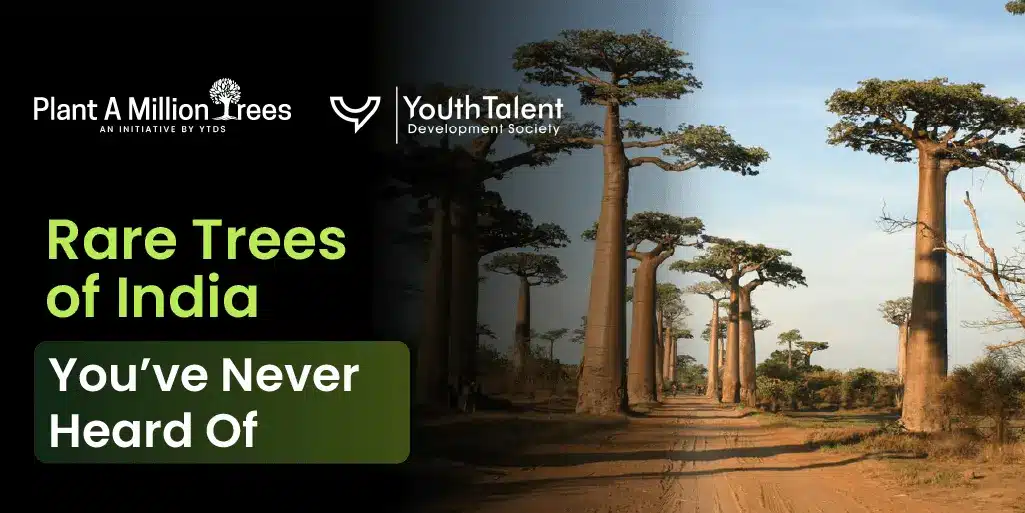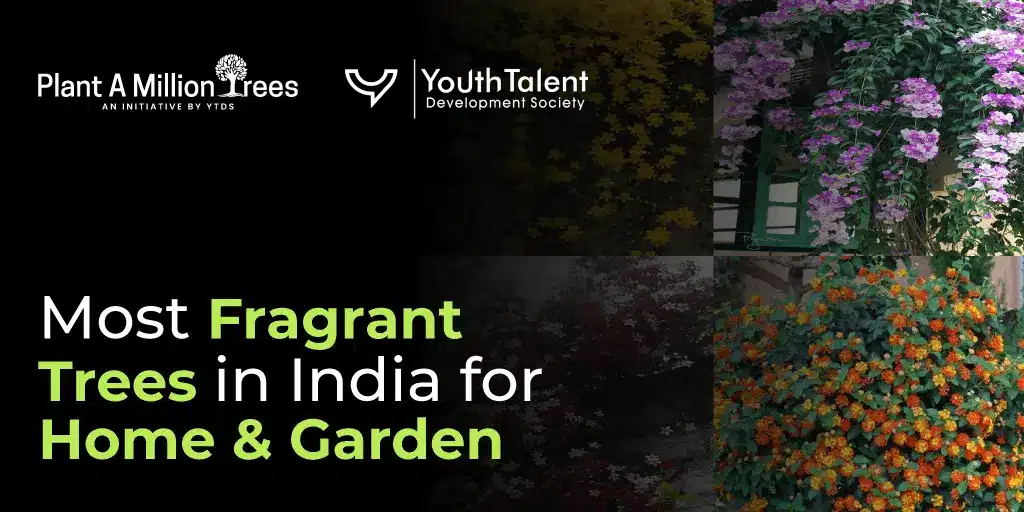Being able to wake up not to the buzzing of traffic, but to the singing of sunbirds and the...
One of the richest sources of biodiversity on earth is located in India with more than 15,000 flowering plant species. Though, there are still a number of rare and region-specific trees whose names are not known beyond institutional or small forest groves.
Situated beyond the scope of their utilitarian and commercial value, these botanical gems present not only ecological wonders but are also the essential powers in maintaining local ecosystems.
Unluckily, most of these species are on the brink of extinction following the loss of their habitat and human interference. Here, on this blog, we have highlighted some of those rare trees in India and why they are needed more than ever.
What Classifies a Tree as Rare?
Not all trees with little population are regarded as rare. A tree in India is considered rare when a number of ecological and geographical aspects are put in consideration:
- Endemism: Trees inhabiting only certain areas (e.g. Shola forests or Northeast hills).
- Restricted Habitat: The trees that exist in reducing or fragmented habitats such as mangroves, dry deciduous forests or the alpine regions.
- Low Reproductive Rate: Trees which have difficulties in easily propagating or have pollination difficulties.
- Threatened flora: Trees that are classified as vulnerable, endangered, or critically endangered on Botanical Survey of India or IUCN.
Learning about such factors will assist in setting conservation priorities and investments.
India’s Most Unheard-Of Rare Tree
The ecological diversity of India is often celebrated through its vast forests, rich reserves of medicinal herbs, and sacred groves. Yet, beneath this widely acknowledged richness lies a lesser-known group of tree species. These trees, though relatively obscure in public awareness, hold immense ecological and cultural significance.
They often thrive in unique ecosystems and climatic niches, making them vital indicators of habitat health. Despite their importance, they seldom feature in mass plantation drives or public consciousness. Preserving them is essential not only for biodiversity but also for India’s botanical heritage.
1. Chukrasia tabularis (Indian Mahogany)
Native to the northeastern and central forests, this species is valued for its strong, durable timber. It also has a distinctive leaf shape and blooms early in the season, making it ecologically important. Sadly, wild populations have declined due to habitat destruction and overharvesting.
2. Elaeocarpus recurvatus
Located in the tropical rainforests of the Western Ghats, this species produces striking blue fruits, much like the rudraksha. As forest cover shrinks, the survival of this rare species is under serious threat.
3. Taxus wallichiana (Himalayan Yew)
Thriving at higher Himalayan altitudes, this tree is known for its medicinal properties, particularly in cancer treatment. However, unregulated bark harvesting has pushed it into the critically endangered category.
4. Madhuca insignis
Once abundant along the Sharavathi River in Karnataka, this tree is now critically endangered, surviving in only a few isolated locations. Its flowers and fruits once supported local biodiversity and community livelihoods, but dam construction and habitat degradation have driven it to the brink.
5. Boswellia serrata
This arid-zone species, native to central India, is the source of frankincense. While its resin is still tapped for Ayurvedic and religious use, the lack of sustainable practices has caused its population to decline.
6. Pterocarpus marsupium (Indian Kino Tree)
This tree’s heartwood extract is traditionally used to treat diabetes. However, deforestation and excessive usage have led to a steady decrease in its natural presence.
Why These Trees Matter
These rare and underappreciated trees are not just remnants of the past, they are living bridges between India’s ecological history and its sustainable future. Their rarity only amplifies the urgency to conserve them.
Recognizing and protecting such species is crucial in our efforts toward inclusive conservation, climate resilience, and region-specific afforestation.
Why Are These Trees Becoming Rare?
Some of the reasons that explain the dwindling population of rare and exotic trees in India include the following:
- Urbanization and Land Use Change: Deforestation is caused by the urbanization making cities grow into forest areas thus destroying indigenous trees and those peculiar to the region.
- Deforestation and logging: The trees such as Red Sanders may be valuable; they are bought by the illegal loggers.
- Erosion: Trees planted on hillside or on riverine landscapes experience root-stability and destruction.
- Climate Change: Khasi Pine and Hill Glory Bower amongst other species are climate-sensitive.
- Invasive Species: Eucalyptus which grow faster than early rare trees usually replace the latter.
An example is the Indian Kino (Pterocarpus marsupium) which is being lost as a result of overexploitation given the encroachment of the habitats as well.
What is Going on to Safeguard These Trees?
India has done several measures to protect its rare flora:
- Actively pursues an inventory of, and updating of, conservation status of native rare trees: Botanical Survey of India (BSI).
- Forest Research Institutions: Similar to the Institute of Forest Genetics and Tree Breeding (IFGTB) favours the seed banks and propagation research.
- Ex-situ Conservation: Ex-situ Conservation is assuming the form of growing of many species in a secure area/arboretums/botanic gardens.
- Community Forest Projects: This is used in some other states such as Kerala and Sikkim where the local communities are involved in the protection of forest that has their native forests.
- Policy Level Interventions: Sustainable practices are facilitated by Biodiversity Management Com- mittees (BMCs) and implementation of Forest Rights Act.
- One such program is conservation of Wild Nutmeg in the Western Ghats as part of Myristica Swamp Forest Program.
- One such program is conservation of Wild Nutmeg in the Western Ghats as part of Myristica Swamp Forest Program.
Join the Effort to Save Rare Trees
Citizens can do something concrete in order to save rare Indian species:
- Volunteer: Become a volunteer of NGOs and participate in tree plantation activities targeting native or unique plants.
- Eco-Volunteering: Help eco-clubs, schools or the forest departments to check out on local flora.
- Take Biodiversity Walks: Find out how to recognise rare species in the vicinity.
- Nurture Seed Banks and Nurseries: Contribute to or purchase at seed protection-oriented plant nurseries.
- Social Media Advocacy: Publicize information about rare trees by posting case histories, and photos and facts on social media sites and blogs.
The activities and programmes conducted in the awareness campaigns, conducted by the likes of Youth Talent Development Society (YTDS), are found to contain exhibitions, school workshops and mini forest projects, based on biodiversity.
Conclusion: Saving More Than Just Trees
The rare trees are not merely peculiarities of botany: they are also ecological foundations, cultural landmarks, and sources of biodiversity. They are not just shade or timber, they would also mean lost stories, medicines, pollinators and an important part of India natural heritage were we to lose them.
It is the duty of us all as the future custodians of this heritage to act, plant, protect and advocate. Post this where you can, give to a local conservation event, or just plant a local tree–because little things can have far-reaching roots of change.




